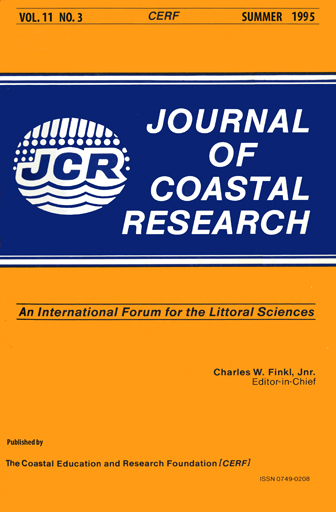Hydrodynamics of a Tidal Inlet in Fourleague Bay/ Atchafalaya Bay, Louisiana
Keywords:
Hydrodynamics processes, tidal inlet, suspended sediment, shear stress, stratification, Fourleague Bay/Atchafalaya Bay, Louisiana.Abstract
Field measurements of hourly water level, flow velocity, suspended sediment, and water salinity were performed simultaneously during two spring tides (in a low and a high river flow season) with two stations (a bay and a gulf station) at each end of the Oyster Bayou, a tidal inlet connecting Fourleague Bay/ Atchafalaya Bay and the Gulf of Mexico in south Louisiana. The objective of this study is to examine the patterns of sediment transport through Oyster Bayou from the Bay to the Gulf and vice versa. During spring tides in a low river flow season (Fall 1992), averaged flow velocity, water discharge, sediment concentration, and sediment flux transported from the Gulf to the Bay were higher at the gulf station than at the bay station. This indicates that the tidal flow regime contributes to sediment sources derived largely from marine processes. During spring tides in a high river flow season (Spring 1993), these physical quantities transported from the Bay to the Gulf were higher at the bay station than at the gulf station. This indicates that the flow regime contributes to the sediment sources derived from both riverine and marine processes. During Fall 1992, data showed that stratification of the water column occurred during flood flow and destratification occurred during ebb flow. This implies that reduced Spring 1993, stratification occurred throughout the study period because of the river discharge. Our field observations show that the Bay undergoes a transformation from a near-riverine estuary in the Spring to a near-marine lagoon in the Fall.Downloads
Published
1995-07-09
Issue
Section
Articles


